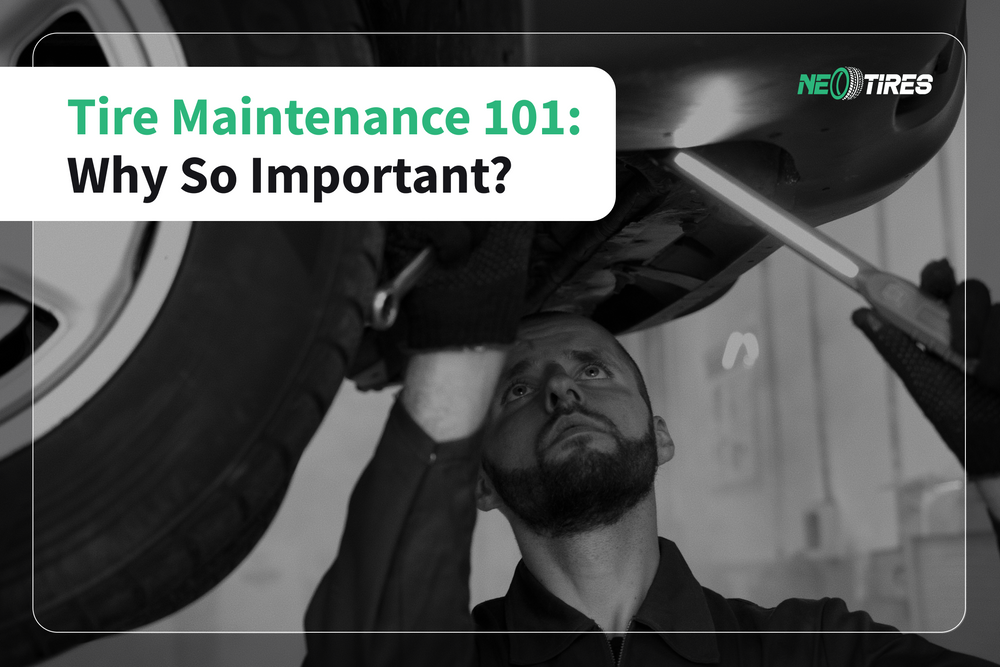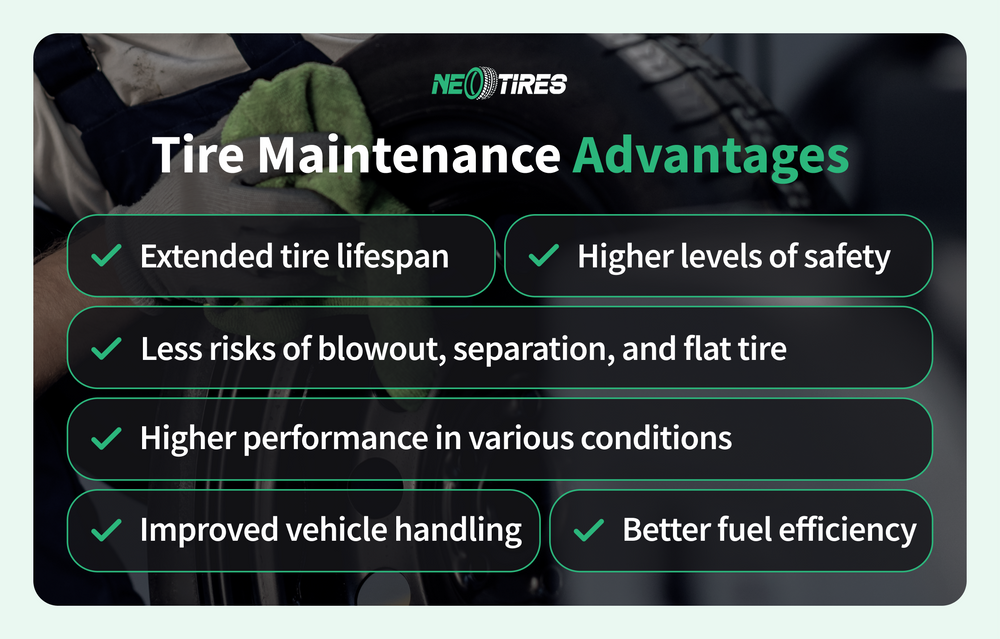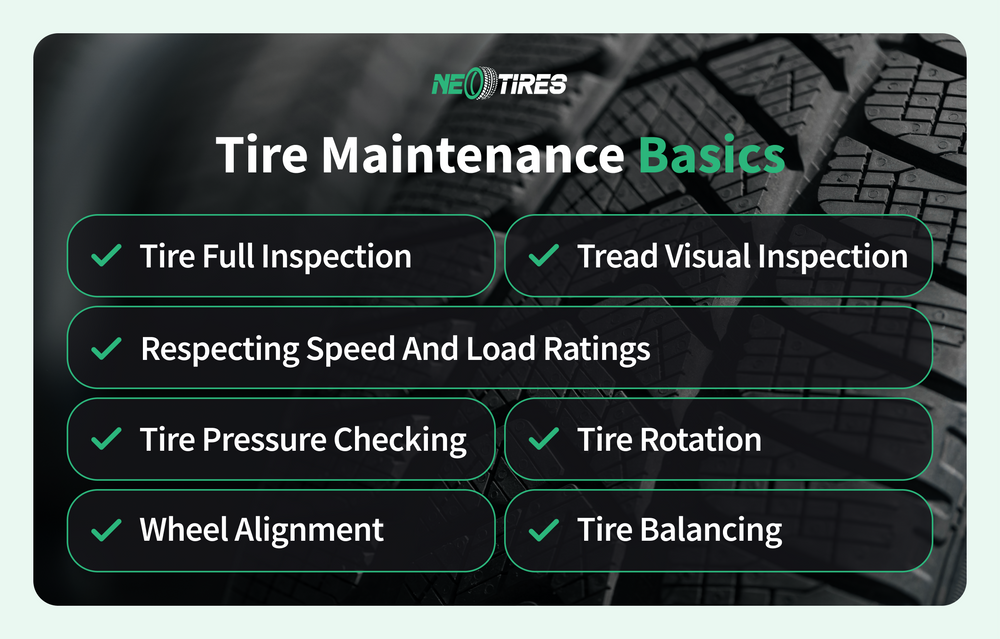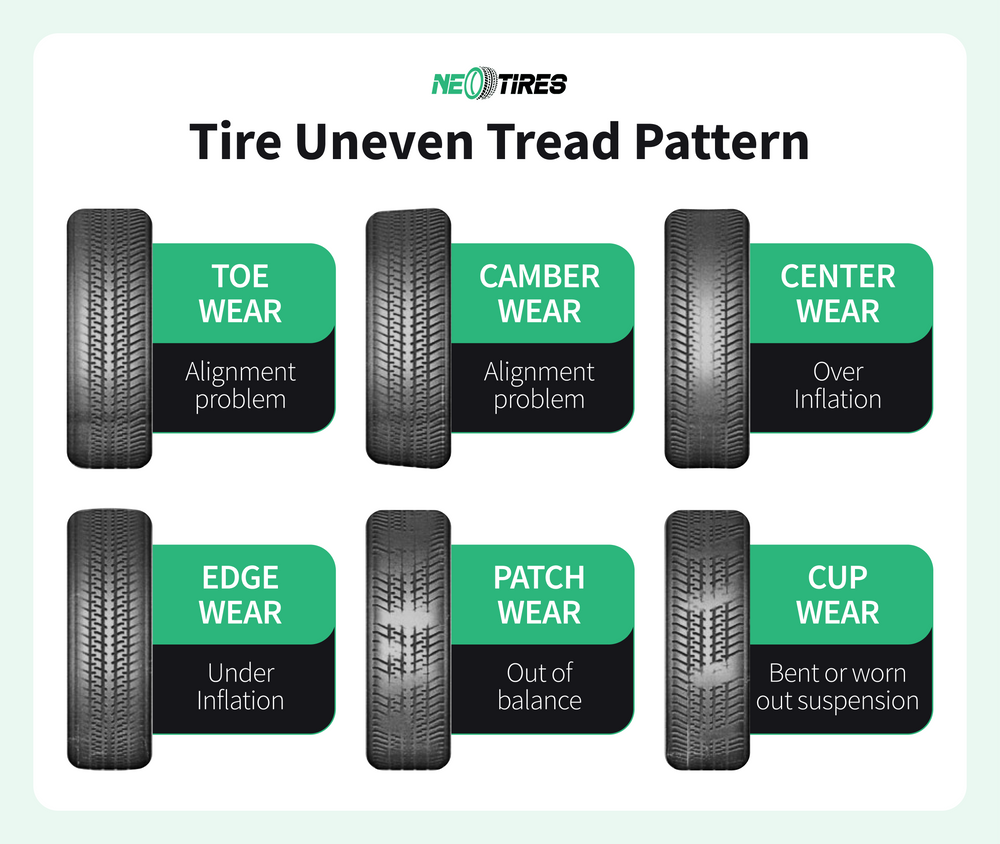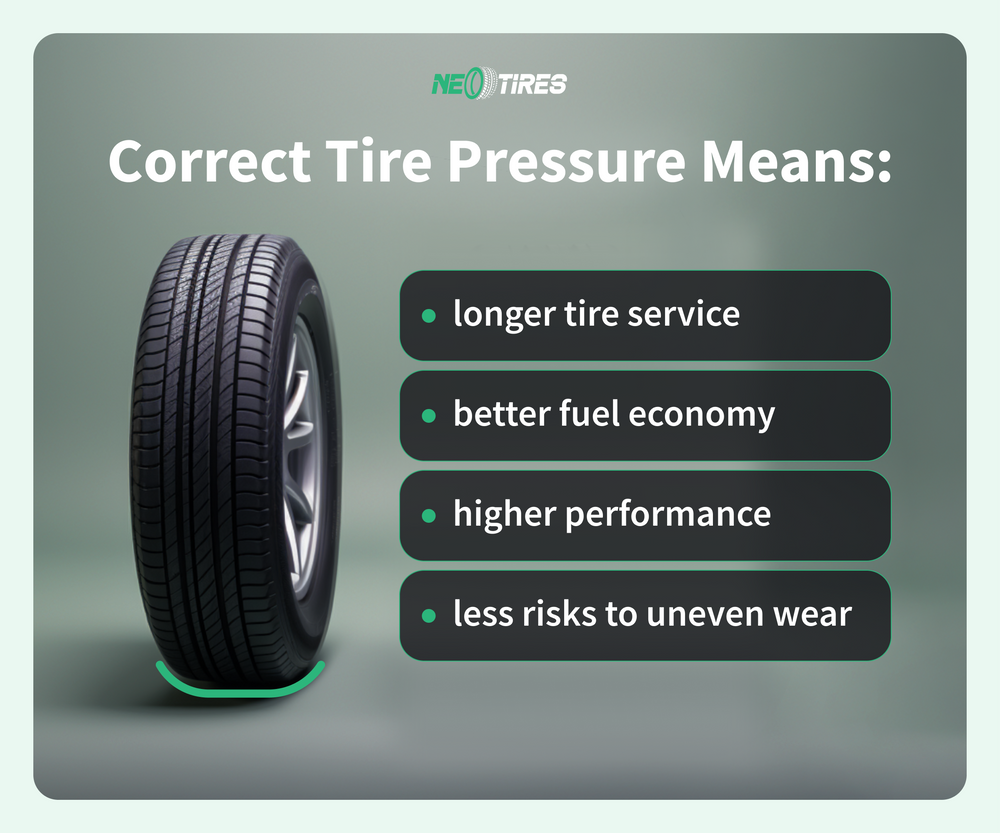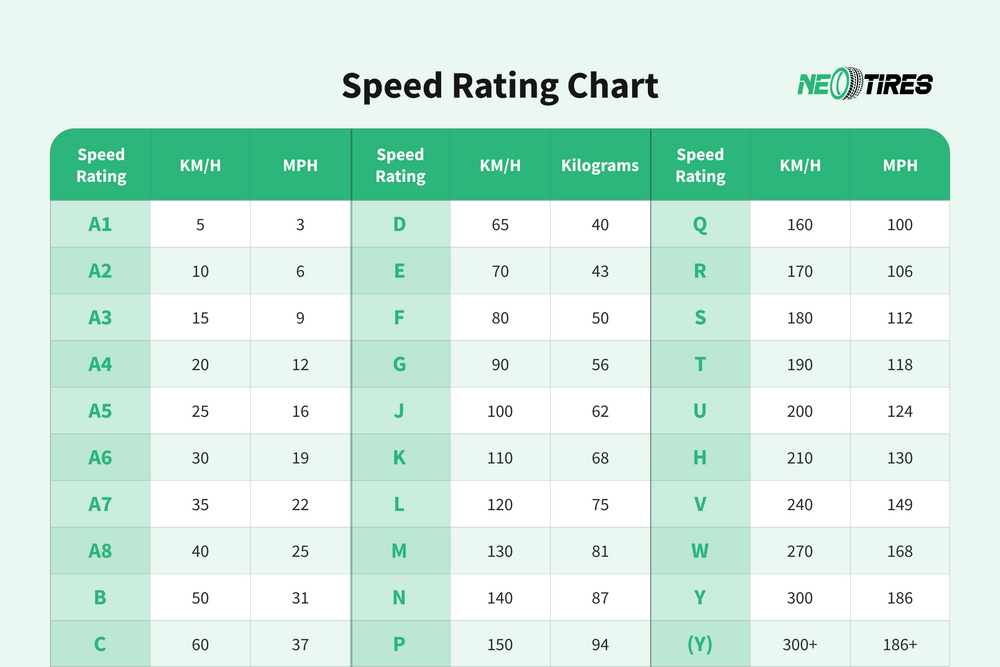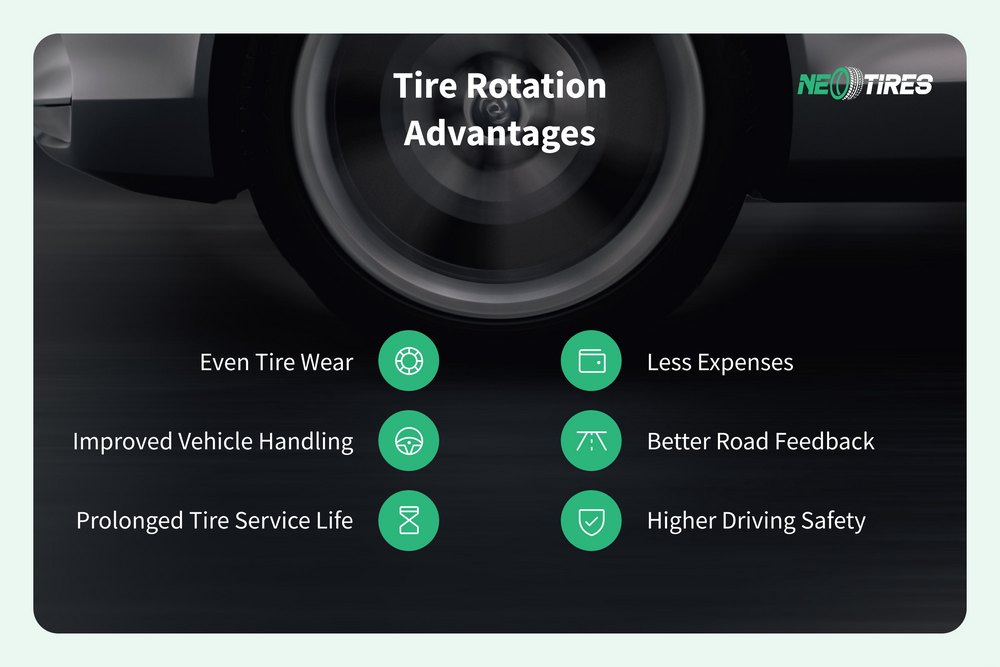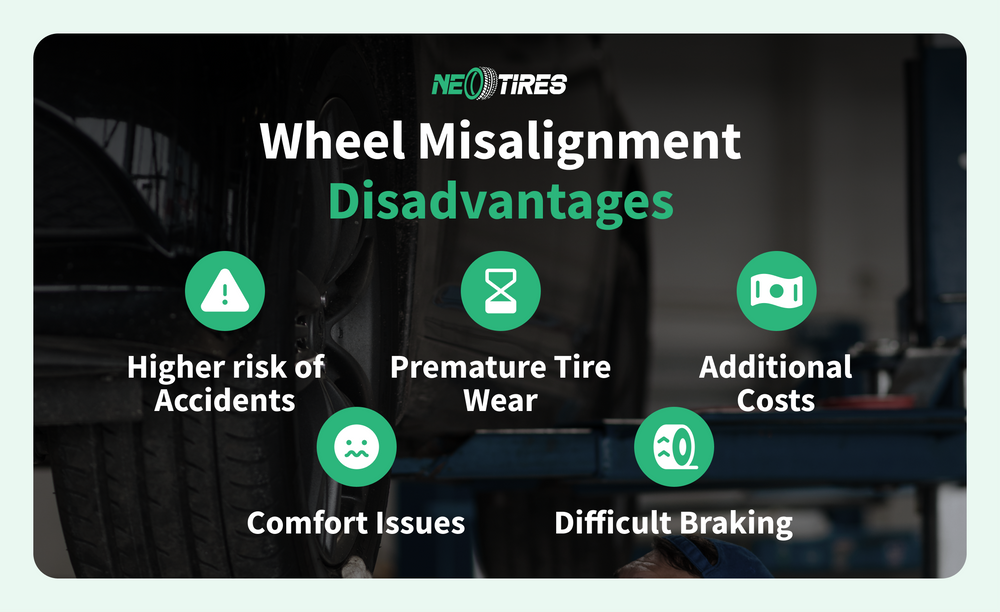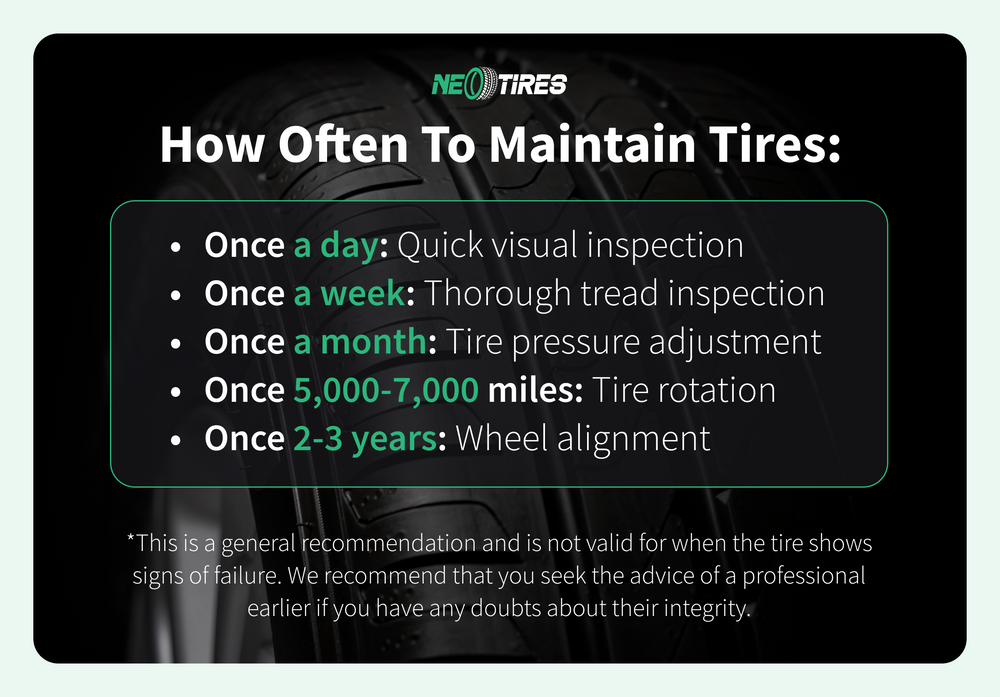A tire's life and service depend a lot on how the owner treats and maintains it. Think of an off-road vehicle whose mission is to climb a mountainous hill. What do you think its abilities depend on? Without a doubt, on tires. Obviously, the vehicle's technical capabilities also play a vital role. But, be sure that without the right tires, no vehicle can triumph over the most challenging conditions.
While tires are generally resistant, durable, and capable per se, the performance they deliver is likely to decrease if they are not treated properly. This is why tire brands constantly repeat "Take care and maintain tires according to manufacturer's recommendations." What exactly does this mean? Why is tire maintenance so important? And what happens if we ignore it?
We thought it would be useful to set the record straight and decipher everything that "tire maintenance" means in this section. In many cases, road US accidents, collisions, blowouts, and similar negative outcomes result from the lack of tire maintenance. The good part is that we can correct these official statistics through tire care and several additional actions to ensure their safety and good serviceability.
Why Is Tire Maintenance Important?
All giant tire manufacturers like Bridgestone and Pirelli encourage drivers to care for tires because they are the only point of contact between the vehicle and the road surface.
Michelin, for example, correlates driver safety as a logical consequence of tire maintenance. Bridgestone also adds that tire care is directly proportional to maximizing comfort and improving the driving experience. Last but not least, all the manufacturers in the industry confirm that tire maintenance optimizes their lifespan and helps them work at their best.
These are just a few reasons why it is worth taking care of your tires as recommended by the manufacturer. Remember that tires face various challenges every day. They must be in optimal shape to perform at their best in their daily stress to rolling on the most challenging terrains.
Tire Maintenance Basics
Tire maintenance is an aspect that should never be ignored. Now it's time to discuss the importance of maintaining your tires and how often you should do it. So, here are the 7 steps you must take to ensure healthy maintenance of your tires:
Most of these actions will be done by the auto mechanic. So, you only have to schedule a visit to the technical center when the time comes. Now let's take them one by one and I'll explain what to draw attention to.
Tire Full Inspection
This is perhaps the simplest thing you can do to ensure the health of your tires. Tire visual inspection is a process as simple as possible. However, you need to know what you're looking for when you do it. Just glancing around aimlessly won't help you much. You should instead look accurately for signs of damage and issues that could potentially lead to tire failure.
During inspection, be alert for sidewall cracks or bubbles. Also, make sure that the tire does not have bulges. Carefully inspect the condition of the tire in different places to observe its uniformity. Tires are constantly subjected to various obstacles. You can never be sure that they are not affected by debris or by aggressive braking, accelerating, or cornering.
If you notice signs that could question the integrity of your tires, look for a professional second opinion. Whenever you spot sidewall damage, do not postpone tire replacement because you risk undergoing a blowout at any moment.
Tire Tread Visual Inspection
The tire tread comes into direct contact with all types of road surfaces. Moreover, it must ensure grip, dry and wet traction, hydroplaning control, and short braking distance in an ideal scenario. Last but not least, the tread is an important element in the context of fuel economy.
Inspecting the tire tread is as important as inspecting the entire rubber piece. A driver should check not only its integrity but also its wear status. The more worn and less deep the tread, the more mediocre the performance and safety of the tire. Specialists recommend that tires be replaced when the tread reaches a maximum depth of 2/32'' according to official recommendations. For safety reasons, however, we recommend considering tire replacement long before it reaches this limit. The easiest way to check tread depth is the Penny Test.
Another essential aspect of your tire tread is its uniformity. We mainly refer to the tread wear pattern that tells you how healthy your tires are. During the inspection, pay close attention to central wear, diagonal wear, cupping patterns, or any other type of abnormal wear on the inner or outer edge of the tread.
All these uneven wear signs speak of a certain problem. Whether it's tire over- or underinflation, or wheel misalignment, you may need the help of a mechanic to correct the issue.
Tire Pressure Checking
All vehicles launched after 2007 have an integrated pressure monitoring system, or TPMS, as we all call it. This means that whenever the tire pressure is below the limit, the system alerts the driver to adjust the level as soon as possible. The problem is that even with this system, about 10% of drivers consciously ignore the underinflation alert.
On the other hand, many drivers consciously prefer to add some extra PSI to their tires under the pretext of lower rolling resistance, and therefore better fuel economy. The problem is that overinflation shortens tire life, which cancels the "savings" illusion.
Maintaining the correct tire pressure is an important measure of their maintenance. Whether over or underinflated, the tires develop uneven wear. This translates into shorter tread life, less performance, and higher safety risks.
Below you have at least 4 benefits of the correct pressure in the tire. The recommended level is the one that delivers maximum performance and safety, without cutting from tire longevity. Everything that goes more or less than that level leads to a chain of adverse effects that are more serious than the potential benefits. Here they are:
Respect Tire Speed And Load Ratings
Respecting the tire load and speed ratings is also an important step in tire maintenance. If your goal is to contribute to your tires' long serviceability, you cannot ignore this step. Modern technologies indeed help manufacturers craft tires that are durable and resistant to challenging road conditions. This does not mean that you have to subject them to abuse beyond the limit of their resistance.
To begin with, each tire has a certain load and speed index. This is determined by the type and purpose of the tire, its rubber formula, and the technologies in it, as well as its price if you want. After certain laboratory tests, each tire receives a rating that suggests its limit in terms of speed and load. This means that the driver should not exceed this limit because the consequences can be drastic.
For example, a tire that carries more load than it should tends to build up excessive heat. This means that at any moment, the tire can give way and blow out. The same can be expected with non-compliance with the tire speed rating. A tire with a speed limit of 120 mph will hardly withstand the stress at a speed of 180 mph. Tire wear and heat build-up are the least serious effects that could occur. The worst - sudden tire failure.
Tire Rotation
In short, tire rotation means that the mechanic changes the place of the tires in different schemes. You can visit the previous full-detail article on Tire Rotation 101 if you are curious to know more. Either way, the rotation process is mega-important because it contributes to uniform tire wear. Check out at least 6 advantages of tire rotation below:
The rotation choreography helps to even out tire wear. Consequently, the tire service life is extended, giving the drivers the advantage of several thousand more miles. The rotation is recommended once every 5,000-7,000 miles, depending on the vehicle, the driving conditions, and the driving frequency.
Wheel Alignment
The suspension system of the vehicle is constantly subjected to strenuous effort. Every time you hit a pothole, drive on uneven surfaces, or corner aggressively, the wheel angles might come out of their correct position. This means that the tires do not have a correct position relative to the road surface, which leads to early wear and poor performance.
Wheel alignment is a maintenance process through which the technician fixes incorrect angles. In simpler terms, it corrects the position of the wheels so that they are perfectly perpendicular to the road and perfectly parallel to each other.
The 3 defective angles, namely toe, caster, and camber, lead to a chain of adverse effects if left untreated. Apart from tire uneven wear, this issue causes vibrations, handling troubles, pulling to one side, and noises. So, it's not the most pleasant environment for driving, let alone it's not at all safe.
The bottom line here is that wheel alignment is part of the essential tire maintenance actions. This extends the life of the tires and increases their performance. But the most important of all is that the alignment increases the degree of safety of the drivers and their passengers.
Tire Balancing
Tire balancing goes hand in hand with tire rotation in most cases. Balancing is nothing more than correcting the weight points along the tires' circumference. In other words, the mechanic adds small weights to the lighter areas of the tire to even out its weight distribution.
Many drivers prefer to do this process together with tire rotation. Thus, they kill two birds with one stone, especially since the process is not expensive at all. Tire balancing is a step forward in promoting even tire wear and preventing vibrations.
Bottom Line
These 7 steps are what is meant by the "tire maintenance" umbrella term. It's all about awareness and responsibility. These steps increase the safety not only of you as a driver but also of your passengers and other traffic participants. The tires that are taken care of deliver higher performance and a higher safety degree.
Tire Maintenance: FAQs
What is Proper Tire Maintenance?
According to the U.S. Tire Manufacturers Association, 4 elements define proper tire maintenance. These include the correct pressure, regular tread inspection, tire rotation, and wheel alignment. We added 3 more sub-points which are compliance with speed and load ratings, tire balancing, and regular sidewall' inspection. All these criteria together will extend tires' life and ensure optimal performance and safety in various conditions.
Do Tires Require Maintenance?
Tires are a kind of expendable material, that is, they are not eternal. They gradually degrade due to various external factors. We as drivers can reduce the impact of these factors through proper maintenance. If we ensure optimal pressure levels and rotate them on time, their service life becomes longer. So, yes, tires do require maintenance so that they can offer their best without endangering drivers' safety.
How Often Should Tires Be Replaced?
Tire replacement depends on their condition and maintenance. With proper care, the tires end up serving up to 75,000 miles. However, it is difficult to define exactly how much they will serve because variable factors such as climate and road conditions also have a say. Certainly, a tire maintained by regular rotation and alignment as well as correct pressure generally lasts longer than an ignored one. In any case, no tire should be used for longer than 10 years, with or without maintenance, as its integrity is questionable.
How Often Should I Maintain My Tires?
Tire maintenance involves several processes that are usually performed at different time intervals. For example, tire visual inspection could be a daily procedure, or at least once a week. Tire pressure adjustment should be a monthly process or more often, if necessary. Tire rotation and balancing (if necessary) should take place once every 5,000-7,000 miles or every time you change the tires. Finally, wheel alignment is recommended once every 2-3 years. But, it is better to ask for the wheel alignment each time when the mechanic changes your vehicle oil.
Why Trust NeoTires?
Here at NeoTires, we share our passion for the automotive industry and the science behind tires. The tires are actually what defines the behavior and capacity of the vehicle in various road conditions. Choosing the right tire is not a simple process because there are dozens of categories and thousands of products. Here is where we come into play.
Our team gathers automotive specialists and qualified technicians. We know how to find the right products for your unique needs. In addition, we have a wide variety of tires for all kinds of challenges, from smooth highway conditions to the most muddy and rocky surfaces.
We collaborate with reputable brands such as Pirelli, Bridgestone, Hankook, Michelin, Goodyear, and Cooper that enjoy a reliable reputation in this industry. Last but not least, we offer you our qualified yet friendly support and advantageous conditions so that you can enjoy NeoTires services and products to the fullest. Drive safe and choose your tires wisely!




